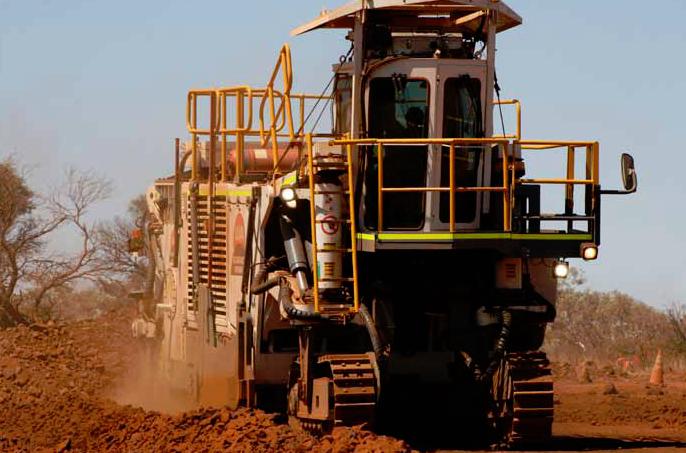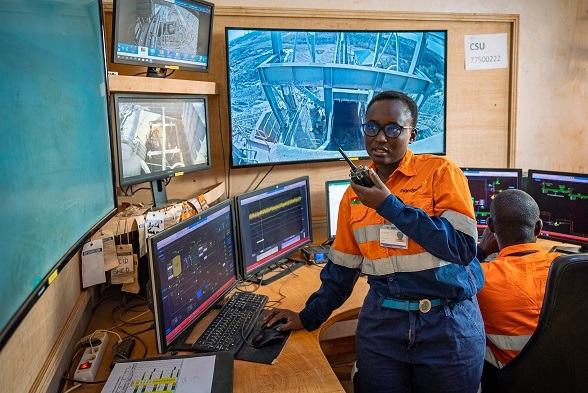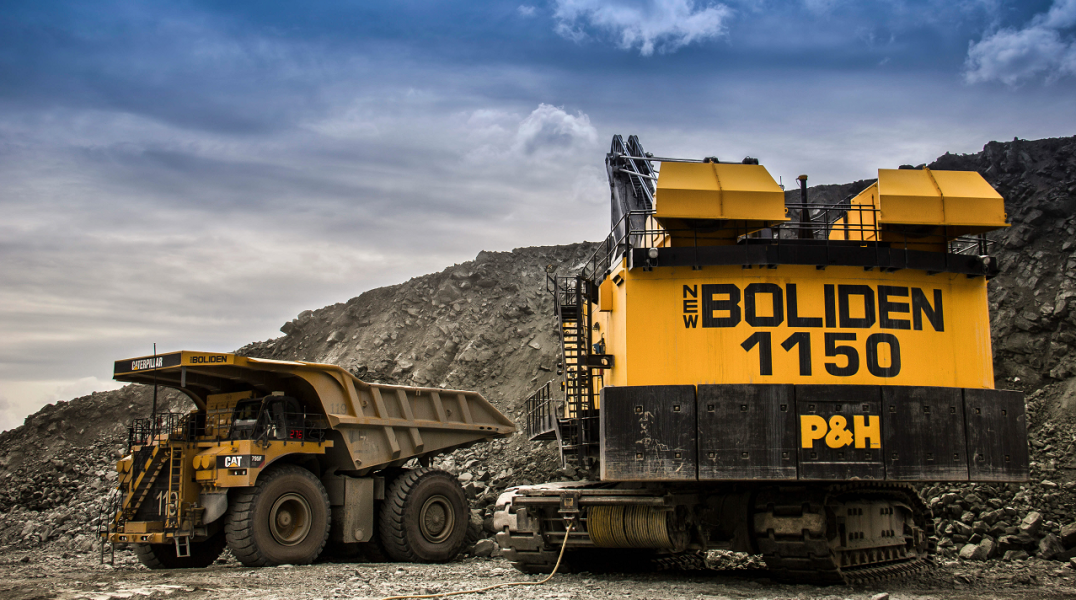
A start-up Australian mining company has found its own solution for getting into production, but is in no rush to grow haphazardly, as Alan Swaby learns.
Flying for the first time to Australia comes as something of a shock. When you do finally reach terra firma, there’s still likely to be three or four hours of flight time over a uniformly red interior before actually touching down. Too small to be noticed but breaking up the hundreds or thousands of kilometres of scrub are the occasional towns whose locations are invariably linked with the country’s mining history, cattle or Christianity.
Nullagine is one such place. A former gold mining town located on the old Great Northern Highway, 1,190 kilometres north of Perth and 240 kilometres east of Port Hedland, it saw the gold rush of the 1880s and produced the first diamond found in Australia. At its peak, the population numbered 3,000 and may yet again, thanks to a current interest in exploration not only for gold and diamonds but also copper and iron ore.
One company that has already struck ‘gold’ is BC Iron—established three-and-a-half years ago when Alkane Resources and Consolidated Minerals pooled their iron ore interests. A series of 20 drill holes in early 2007 established the presence of commercial quantities of iron ore at its lease site in Nullagine; and further exploration and feasibility studies went on to confirm the validity of going into production.
“The geology of the Nullagine deposits is unique,” says managing director Mike Young. “Think of the ore bodies as five storey office blocks 400 metres wide and stretching for four kilometres. The iron ore starts from halfway up and only needs the top layer slicing away. There’s not even an open involved and the quality of ore is highly desirable.”
The flat topped hills, or mesas, will be skimmed up to half a metre at a time with a Wirtgen surface leveller. It’s a technique not common to Western Australia but has been proved effective on adjacent ore deposits such as FMG’s Chichester Operations.
Although the extraction process is straightforward, the mine does have the drawback of being in a locality not blessed with public infrastructure. Consequently, Young and his board had to decide how best to marshal their limited resources. The business is publicly listed and capitalised to the extent of A$160 million but that would have been a flea bite compared with the cost of financing its own needs. The mining company Hancock is developing an iron ore mine in the region at a cost in excess of A$7 billion—an option obviously outside the scope of a junior operator such as BC Iron.
The answer has been to enter a 50:50 joint venture with neighbouring mining company Fortescue Metals Group Limited. “Some have criticised the size of the 50 per cent we’ve given up,” says Young, “but the equation is simple: 50 per cent of something is better than 100 per cent of nothing.”
The deal with Fortescue is that BC Iron will be responsible for extracting the ore and trucking it 55 kilometres to the Fortescue railhead. A new, dedicated and private haulage road will be built to provide the conduit down which monster road trains measuring 65 metres in length and comprising four wagons and two motors will travel, each capable of shifting 350 tons of ore at a time. From there, BC Iron will contract Fortescue for use of its rail and port facilities to transport the iron ore to China’s insatiable steel industries.
Construction of this new A$20 million road is part of the contract BC Iron has made with Watpac Limited, to which BC Iron has also contracted all the extraction, crushing, and screening—a not unusual strategy for start-up companies reluctant to incur excessive debt. Mitchells West will carry out haulage once the road is complete.
BC Iron is taking a bit of a flier in that it has placed contracts with subcontractors even though final permits have yet to be received. However, Young is confident that the company’s way of keeping all stakeholders up to speed will continue to smooth the way.
Once ore gets to the purchaser, the first part of the process of making steel is to convert iron ore into pig iron. Blast furnaces need to use the coarse or ‘lump’ ore, so BC Iron’s ‘fines’ ore will need to be agglomerated or ‘sintered’. So the greater the propensity for those fines to sinter and agglomerate into lumps under heat, the more desirable the ore is. A key component of good fines ore is the ‘ultra-fines’ or material less than -0.15mm. In comparison with neighbouring pisolite and hematite ore bodies—which can contain anything up to 20 or 30 per cent of ultra-fines—Nullagine ore contains no more than 10 per cent in its ready for shipping state.
Normally, 57 per cent iron content of the ore would be considered a low grade ore, but the low incidence of impurities, minimal ultra-fines and their ability to sinter plus the fact that the mining process requires no beneficiation all add up to a readily saleable product. The grades are similar to the mighty Yandicoogina and Robe River deposits of Rio Tinto and BHP.
At a current market price of US$135 per ton and maximum operating costs of around A$50 per ton, the Nullagine project is theoretically highly profitable. The proof will be available at the beginning of next year when production starts in earnest. Already, an 80,000 ton test pit has been mined to prove the processes; and when the road to Fortescue is complete in December, BC Iron has made a commitment to ship one million tons by the middle of next calander year. When the mining has been ramped up to normal production levels, output should be three million tons per annum.
BC Iron is in no rush to grow haphazardly. The plan is to increase in size organically within the present lease boundaries rather than embark on a programme of acquisition. There are other DSO deposits on the lease as well as some which are of a lower grade; and when the latter are worked, they’ll require the beneficiation that current workings have not needed. www.bciron.com.au













